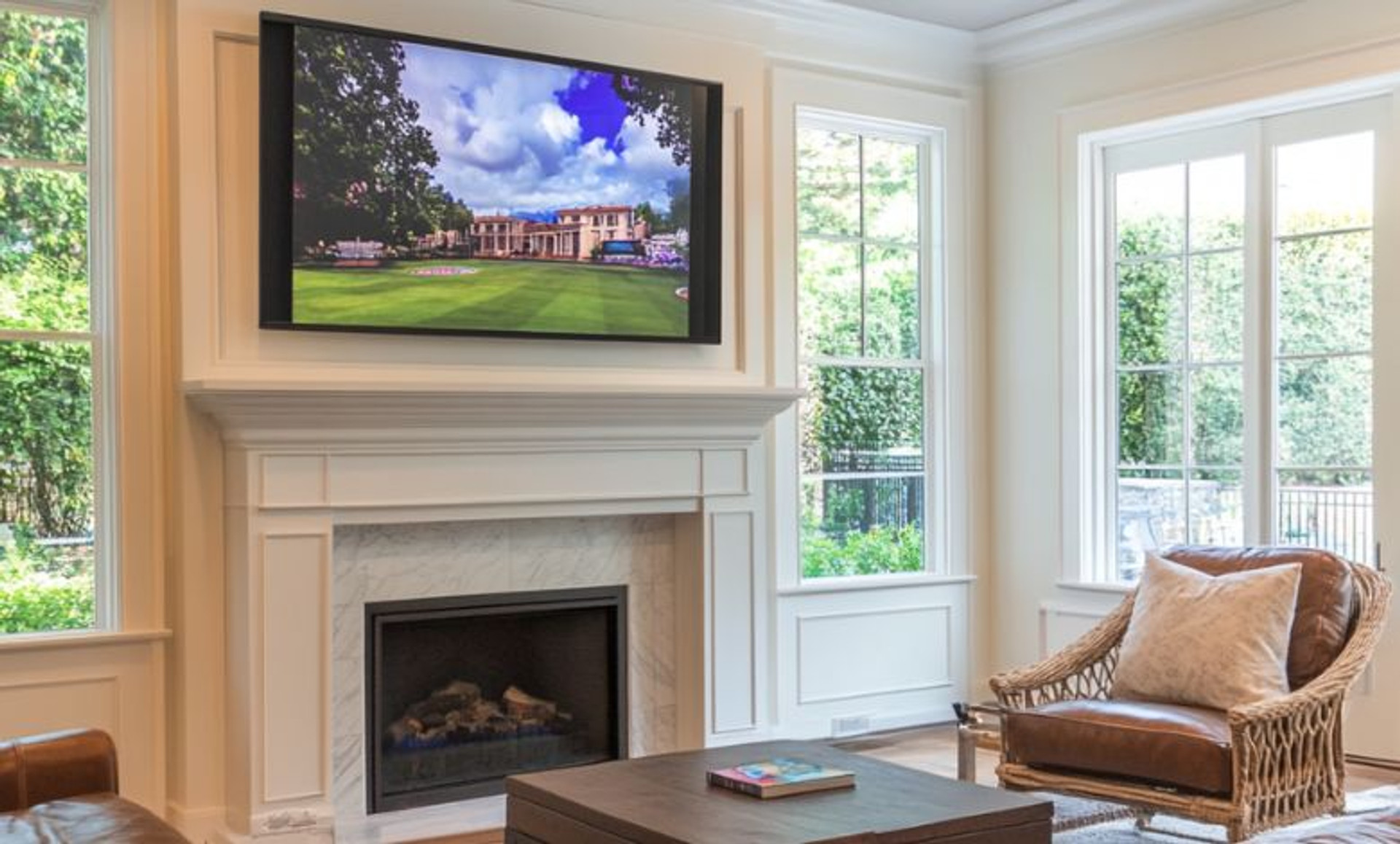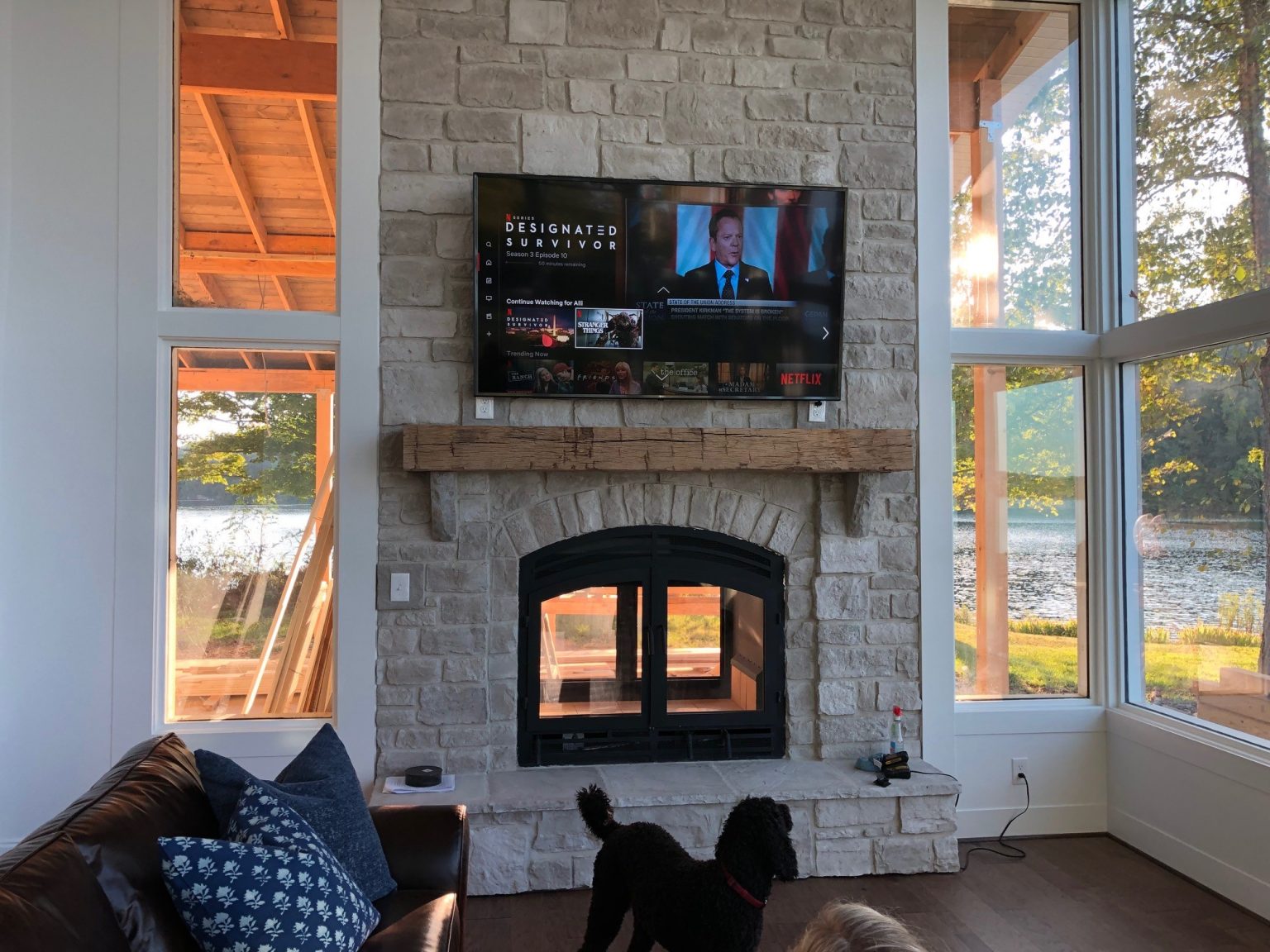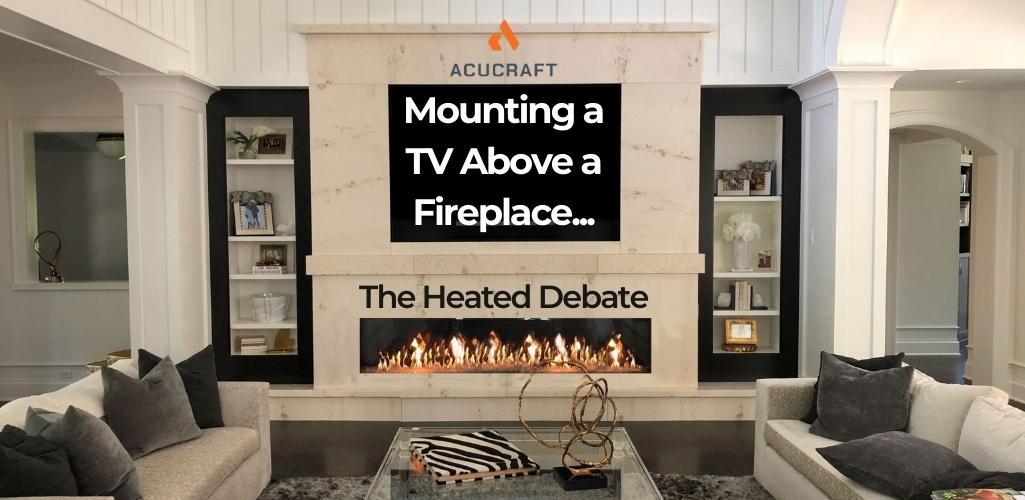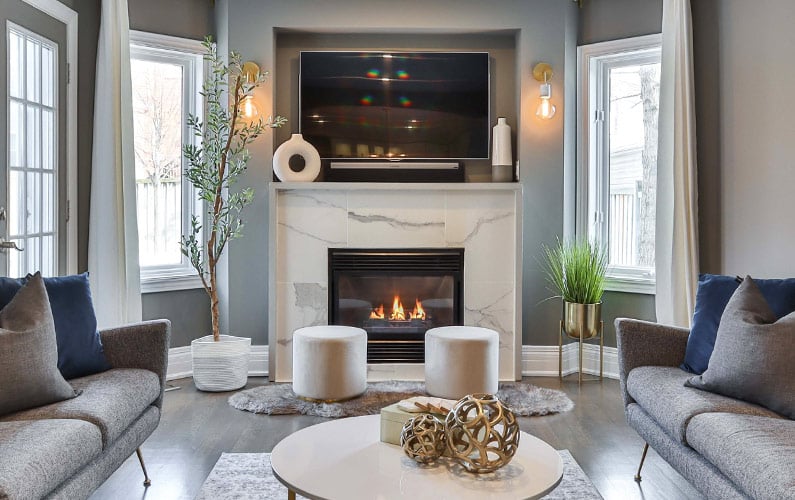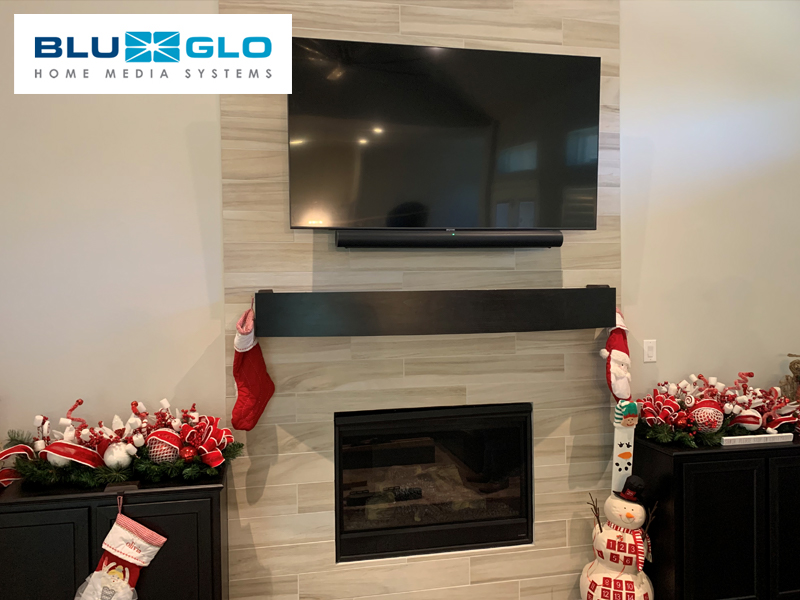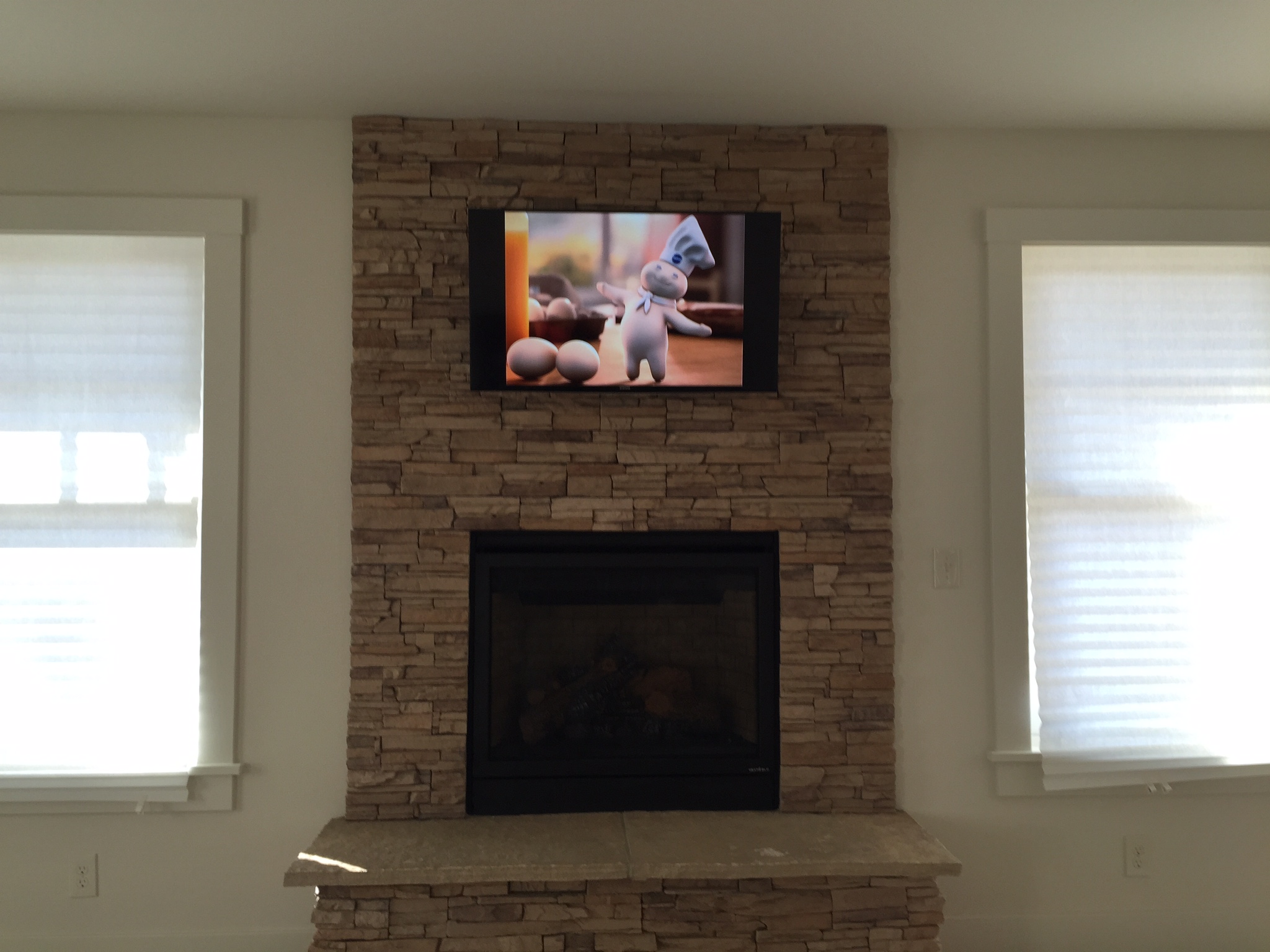Is It Bad To Mount Tv Above Fireplace

Mounting your TV above the fireplace – it's a classic design choice, offering a focal point and saving wall space. But before you reach for the drill, it's crucial to ask yourself: is it *really* a good idea? Let's break down the pros and cons, addressing the potential downsides and helping you make an informed decision. We'll cover everything from heat exposure to viewing angles, ensuring your TV viewing experience isn't compromised.
The Appeal and the Concerns
The appeal of mounting a TV above a fireplace is undeniable. It centralizes entertainment, creating a cozy and stylish living room aesthetic. It can also be a space-saving solution, particularly in smaller rooms where wall space is limited. However, several factors can turn this attractive setup into a homeowner's headache. The most prominent concerns are:
- Heat Exposure: Fireplaces generate significant heat, which can damage delicate TV components.
- Viewing Angle: Looking up at a TV for extended periods can cause neck strain and discomfort.
- Cable Management: Hiding cables can be tricky and require professional installation.
- Mounting Challenges: Fireplace mantels and surrounds can make secure mounting difficult.
The Heat Factor: A Real Threat?
Let's start with the most pressing issue: heat. Excessive heat is a TV's worst enemy. It can shorten the lifespan of the display, cause discoloration, and even lead to complete failure. The level of danger depends on several factors:
- Type of Fireplace: Gas fireplaces tend to produce less radiant heat than wood-burning fireplaces.
- Mantel Depth: A deep mantel can deflect heat away from the TV.
- Distance Between Fireplace and TV: The greater the distance, the less heat exposure.
- TV's Heat Tolerance: Check your TV's specifications for its operating temperature range.
How to Assess the Heat Risk:
Before mounting, conduct a simple test. Light a fire (or turn on your gas fireplace) and let it run for about 30 minutes. Then, carefully feel the wall above the mantel where the TV will be mounted. If the wall feels excessively hot to the touch, mounting a TV there is risky.
DIY Heat Mitigation Strategies:
- Install a Deeper Mantel: A wider mantel acts as a heat shield, deflecting rising heat away from the TV. This is a relatively simple DIY project, but ensure the mantel is securely attached to the wall.
- Use a Heat Deflector: These deflectors are designed to redirect heat away from the wall. They can be purchased online or at fireplace stores.
- Mount the TV Higher: Increasing the distance between the fireplace and the TV reduces heat exposure. However, be mindful of viewing angles (more on that later).
When to Call a Professional:
- If you're unsure about installing a deeper mantel or heat deflector safely.
- If you suspect your fireplace is emitting excessive heat, consult a fireplace specialist.
Viewing Angles: Neck Strain Alert!
Another significant consideration is the viewing angle. Mounting a TV too high can lead to neck strain and an uncomfortable viewing experience. Ideally, the center of the TV screen should be at eye level when you're seated.
Determining the Ideal Viewing Height:
- Sit on your couch or preferred seating.
- Measure the distance from the floor to your eye level.
- This measurement should be the approximate center point of your TV screen.
Compromises and Solutions:
If mounting above the fireplace inevitably results in a higher viewing angle, consider these options:
- Tilting TV Mount: A tilting mount allows you to angle the TV downward, improving the viewing angle. Choose a mount with adjustable tilt for optimal customization.
- Lower Seating: If possible, opt for lower-profile furniture to bring your eye level closer to the screen.
- Accept the Compromise: Be realistic about the viewing angle. If it's only slightly above eye level, the discomfort might be minimal. However, for extended viewing sessions, take breaks to stretch your neck.
When to Rethink the Placement:
- If the required viewing angle is excessively high, causing significant neck strain.
- If you experience discomfort even with a tilting mount.
Cable Management: Taming the Wires
A jumble of cables dangling below your TV is an eyesore. Effective cable management is crucial for a clean and professional look. Here are some DIY solutions:
- Cable Concealers: These paintable plastic channels hide cables along the wall. They are easy to install and provide a neat solution.
- In-Wall Cable Management Kit: This kit allows you to run cables *inside* the wall. *This involves basic electrical knowledge*. Be sure to turn off the power to the circuit before working with electrical wires. This kit typically includes grommets to protect the cables as they pass through the wall.
- Cable Ties and Velcro Straps: Use these to bundle cables together and prevent them from tangling.
- Shorten Cables: Excessively long cables contribute to the clutter. Consider purchasing shorter cables to minimize the mess.
DIY In-Wall Cable Installation - A Word of Caution:
*Working with electricity can be dangerous*. If you're not comfortable with basic electrical work, hire a qualified electrician to install the in-wall cable management kit. Incorrect wiring can lead to fire hazards and electrical shocks. Before you begin, make sure you turn off the power at the breaker to the outlet you'll be working near.
When to Call a Professional:
- If you're uncomfortable working with electricity or drilling into walls.
- If you have complex cable routing needs, such as running cables through multiple walls or floors.
Mounting Challenges: A Secure Installation
Mounting a TV above a fireplace can be more challenging than mounting it on a standard wall. Fireplace mantels and surrounds can interfere with the mounting process. Also, the material behind the mantel (brick, stone, or drywall) affects the type of mounting hardware you'll need.
Steps for a Secure Mount:
- Choose the Right Mount: Select a mount that is compatible with your TV's weight and VESA mounting pattern. Also, consider a full-motion mount if you want the flexibility to adjust the TV's position.
- Determine the Mounting Surface: Identify the material behind the mantel (brick, stone, or drywall).
- Use Appropriate Anchors: Use anchors specifically designed for the mounting surface. For brick or stone, use masonry anchors. For drywall, use heavy-duty drywall anchors.
- Measure Accurately: Use a level to ensure the mount is perfectly level before drilling.
- Securely Attach the Mount: Tighten all screws and bolts to ensure the mount is securely attached to the wall.
Mounting on Brick or Stone:
Mounting on brick or stone requires special tools and anchors. You'll need a hammer drill and masonry drill bits to create the pilot holes. Use masonry anchors designed to expand and grip the brick or stone. *This can be a challenging DIY project, especially for beginners*.
When to Call a Professional:
- If you're not comfortable drilling into brick or stone.
- If you're unsure about the proper anchors to use.
- If you have any doubts about your ability to securely mount the TV.
Alternatives to Above-Fireplace Mounting
If the risks and challenges of mounting above the fireplace seem daunting, consider these alternatives:
- Mount the TV on a Nearby Wall: This is often the simplest and most practical solution. Choose a wall that offers a comfortable viewing angle and easy cable management.
- Use a TV Stand: A TV stand provides a stable platform for your TV and offers storage space for your media devices.
- Corner Mount: A corner mount is a good option if you have limited wall space.
- Motorized TV Lift: These lifts conceal the TV when not in use, offering a clean and modern look. They can be installed in cabinets or even below the floor. (Consider professional installation)
Final Considerations
Mounting a TV above a fireplace can be a visually appealing and space-saving solution, but it's essential to carefully consider the potential risks and challenges. Prioritize safety and comfort by addressing heat exposure, viewing angles, cable management, and mounting security. If you're unsure about any aspect of the installation, don't hesitate to seek professional assistance. Ultimately, the best decision depends on your individual circumstances, preferences, and DIY skills.
Key Takeaways:
- Assess Heat: Test the wall temperature above the fireplace before mounting.
- Prioritize Viewing Angle: Aim for eye-level viewing or use a tilting mount.
- Manage Cables: Conceal cables for a clean look.
- Secure the Mount: Use appropriate anchors for your wall type.
- Know Your Limits: Don't hesitate to call a professional for complex installations.
By carefully weighing the pros and cons and taking the necessary precautions, you can create a stunning entertainment setup without compromising your TV's lifespan or your viewing comfort.

